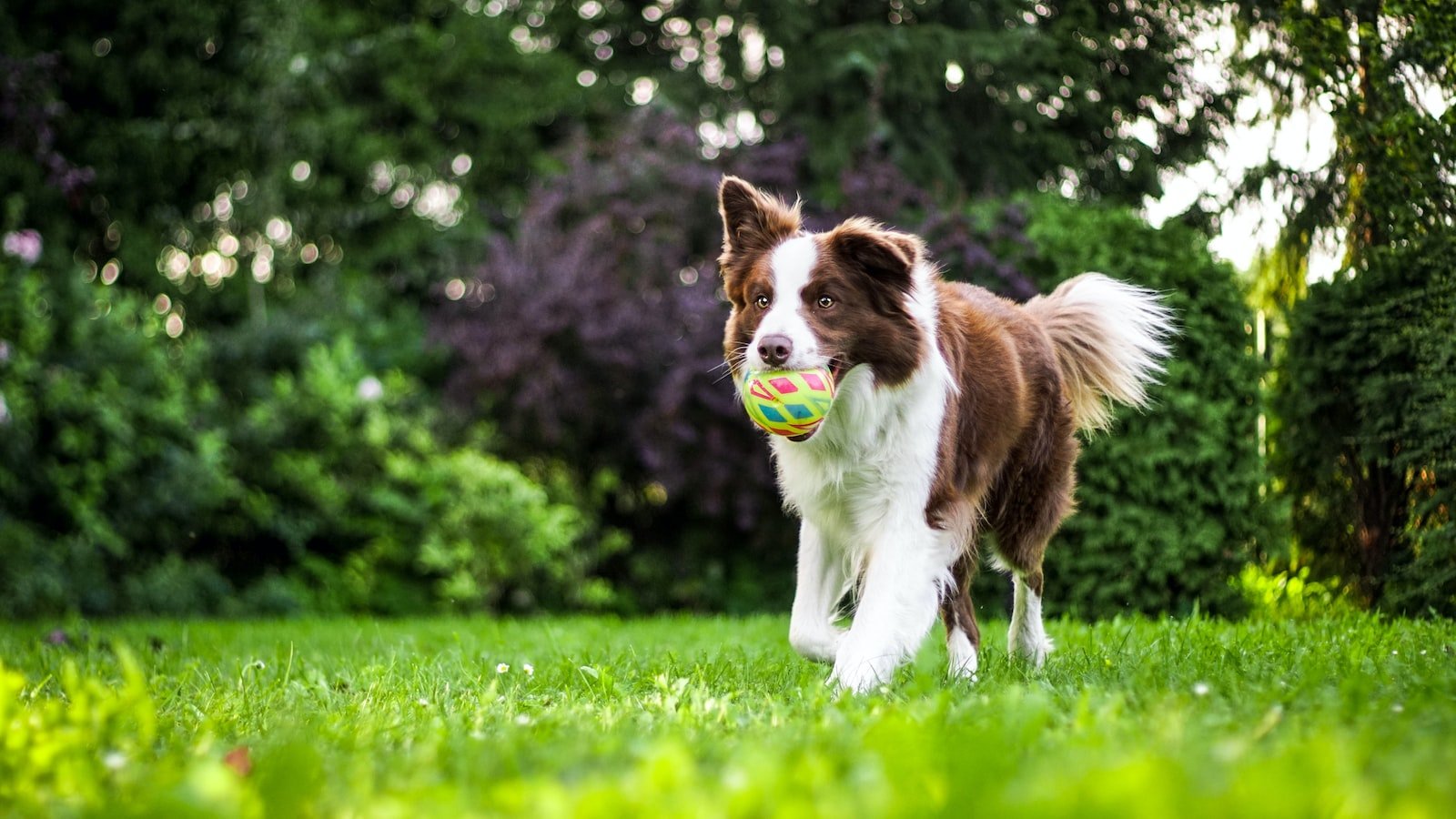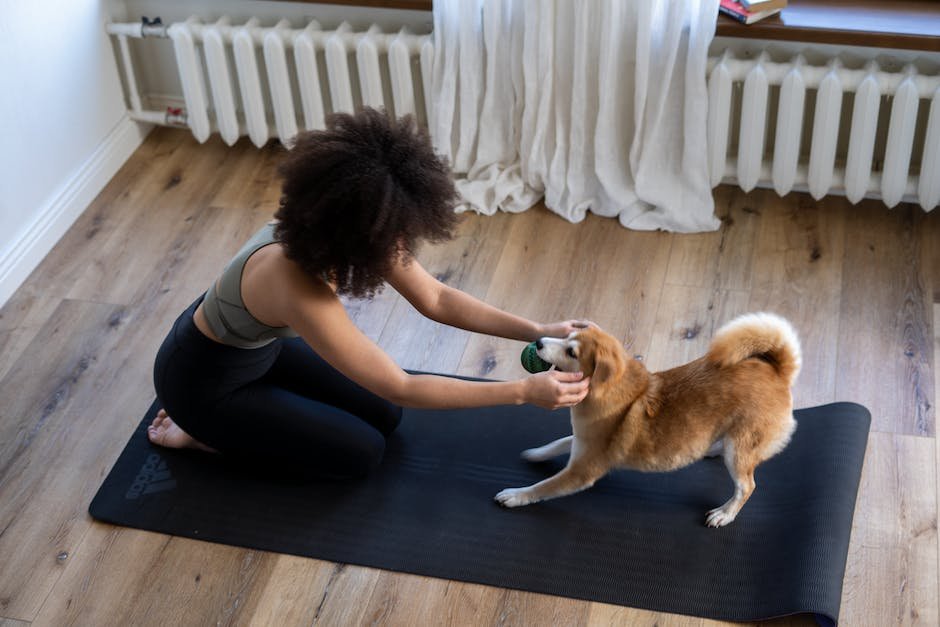They say a dog’s love is unconditional, but what about their understanding of boundaries? Teaching our furry companions the importance of safe affection is just as crucial as any other command we drill into their eager minds. Amidst the countless tricks and techniques, there exists a charming command that can bridge the gap between canine love and personal space: the “Kiss” command. In this article, we dive into the realm of teaching dogs the fine art of gentle and safe kisses. So, grab a treat and join us on this endearing journey of building trust while exploring the delicate balance between smooches and respect.
Table of Contents
- The Importance of Teaching the “Kiss” Command to Your Dog
- Understanding Dog Body Language: Ensuring Safe and Consensual Affection
- Step-by-Step Guide: Teaching Your Dog the “Kiss” Command Properly
- Setting Boundaries: Teaching Your Dog Not to Lick Faces Without Permission
- Ensuring Safe Interactions: Supervision and Necessary Precautions
- Q&A
- Final Thoughts

The Importance of Teaching the “Kiss” Command to Your Dog
Teaching your dog the “Kiss” command is more than just a cute trick; it actually serves a purpose in promoting socialization and strengthening the bond between you and your furry friend. Here are a few reasons why teaching this command is important:
- Enhances communication: Teaching your dog to kiss on command allows for clear and positive communication. It helps your dog understand that you enjoy their affection and prompts them to express it in a controlled manner.
- Improves social interactions: By mastering the “Kiss” command, your dog becomes more comfortable showing affection towards others. This can be particularly beneficial when introducing your dog to new people or in social situations, minimizing any potential anxiety or fear they may have.
- Strengthens the bond: The affectionate act of kissing not only deepens the connection between you and your dog but also builds trust and reinforces positive reinforcement. This bond is essential for a happy and well-adjusted dog, enabling them to feel secure in their home environment.
Remember, patience and consistency are key when teaching the “Kiss” command. Using positive reinforcement techniques, rewards, and plenty of love and encouragement, you’ll be amazed at how quickly your dog learns to shower you with adorable kisses on command!

Understanding Dog Body Language: Ensuring Safe and Consensual Affection
Dogs are incredible communicators, but their language doesn’t consist of words like ours. Instead, they express themselves through subtle cues and physical gestures. As responsible pet owners, it is crucial for us to decipher their body language to ensure a safe and comfortable environment for both our furry friends and ourselves.
1. Tail Wagging: While many assume a wagging tail means a happy dog, it’s not always the case. A rapidly wagging tail held high can indicate excitement or even aggression. On the other hand, a low, slow wag often signifies insecurity or submission. It’s vital to consider the tail position alongside other indicators to understand a dog’s emotional state.
2. Ears: A dog’s ears can give us valuable insights into their mood. When erect, with slight forward positioning, the dog is likely alert or interested. Conversely, flattened or pinned-back ears suggest fear, anxiety, or aggression. Understanding their ear position allows us to approach them appropriately and avoid provoking any unwanted reactions.
3. Eye Contact: Direct eye contact can communicate different messages to dogs depending on the context. While a relaxed, soft gaze often indicates trust and affection, prolonged staring can be interpreted as a challenge or even a threat. Respecting a dog’s comfort by avoiding prolonged eye contact is essential, especially when establishing a bond of trust.
By paying attention to these and other body language cues, we can create an environment where our dogs feel understood, safe, and loved. Remember, their well-being depends on our ability to appreciate and respect their nonverbal communication.

Step-by-Step Guide: Teaching Your Dog the “Kiss” Command Properly
Step 1: Establish Trust and Bonding
Before teaching your furry friend the “kiss” command, it is vital to establish trust and bonding. Spend quality time with your dog, engage in play sessions, and reward them with treats and praises for good behavior. This will create a positive and secure environment for your dog to learn and be receptive to new commands.
Step 2: Choose a Unique Cue
Every command needs a unique cue. In this case, select a distinct verbal cue, such as “kiss,” that your dog will easily recognize. Consistency is key, so remember to always use the same cue every time you want your dog to perform the action.
Step 3: Introduce the Command
In a calm and quiet environment, get your dog’s attention by saying their name and showing them a treat. Once their gaze is fixed upon you, bring your face close to theirs and gently say the cue word, “kiss.” Avoid physically forcing your dog to lick your face as this may cause discomfort or anxiety. Instead, use positive reinforcement by rewarding them with a treat for any attempted “kiss.”
Step 4: Repeat and Reinforce
Consistency and repetition are crucial in training your dog. Practice the “kiss” command several times a day, gradually decreasing the need for treats as your dog becomes more familiar with the command. Praise and reward your furry companion each time they successfully respond to the cue, reinforcing their positive behavior.
Remember, teaching your dog the “kiss” command requires patience, love, and understanding. Celebrate every small progress and enjoy the adorable bonding experience with your four-legged friend!
Setting Boundaries: Teaching Your Dog Not to Lick Faces Without Permission
Teaching your furry friend how to respect personal space and setting boundaries is an essential part of their training. One common behavior that many dog owners struggle with is their dog’s tendency to lick their faces without permission. To ensure a harmonious coexistence, it’s important to establish clear guidelines and teach them the appropriate ways to interact.
1. Communication is key: Dogs are exceptional at picking up on human cues, so it’s important to communicate your expectations clearly. Use consistent verbal commands like “No lick” or “Off” each time your dog attempts to lick your face without permission. Reinforce this command with a firm and confident tone.
2. Reinforce desired behaviors: Dogs thrive on positive reinforcement, so reward your dog when they refrain from licking your face without permission. Praise them enthusiastically and reward them with their favorite treat or a pat on the back. This helps them associate good behavior with positive outcomes.
3. Practice controlled greetings: Teach your dog alternative greetings that respect personal space. Train them to sit or offer a paw instead of jumping up and licking your face. Reward and praise them for their calm behavior during these controlled interactions.
Ensuring Safe Interactions: Supervision and Necessary Precautions
In order to create a secure environment for everyone involved, it is imperative to emphasize the importance of supervision and necessary precautions during interactions. By doing so, we can mitigate potential risks and ensure the well-being of individuals participating in various activities.
Supervision:
- Designate responsible individuals to supervise all interactions.
- Ensure supervisors are adequately trained and capable of handling any possible emergencies.
- Regularly assess the supervision methods and make necessary adjustments to maintain safety standards.
- Encourage open communication channels between supervisors and participants to address any concerns.
Necessary Precautions:
- First Aid: Always have a fully stocked first aid kit readily available in case of minor injuries or accidents.
- Emergency Plan: Develop and communicate a clear emergency procedure to follow in case of more severe incidents.
- Risk Assessments: Regularly conduct thorough risk assessments to identify any potential hazards and take appropriate precautions.
- Compliance with Regulations: Stay up to date with relevant safety regulations and ensure compliance in all interactions.
- Training: Provide adequate training on safety measures to all participants, including employees, volunteers, and participants.
By prioritizing supervision and implementing necessary precautions, we can create an environment that fosters safe and enjoyable interactions for everyone involved. Remember, the well-being of participants should always be at the forefront of our minds.
Q&A
### **What is the “Kiss” command?**
The “Kiss” command is a training technique to teach your dog how to give you safe and gentle affectionate kisses. It involves rewarding your dog for gently touching their nose to your cheek when given the command.
### **Why is teaching safe affection important?**
Teaching safe affection is important to ensure that both you and your dog feel comfortable and respected during moments of physical interaction. It helps prevent any accidental biting or rough behavior that may occur when expressing affection.
### **How can I begin teaching my dog the “Kiss” command?**
Start by rewarding your dog for any gentle nose-to-cheek contact. Then, use a specific cue word like “kiss” when your dog performs the action. Eventually, your dog will associate the cue word with the action and learn to give you affectionate kisses on command.
### **What are the benefits of teaching the “Kiss” command?**
Teaching the “Kiss” command strengthens the bond between you and your dog and allows for safe and controlled affection. It also helps develop your dog’s impulse control, making them less likely to display excited or excessive licking behavior.
### **Can all dogs be taught the “Kiss” command?**
Yes, the “Kiss” command can be taught to most dogs regardless of their age or breed. However, it is important to consider your dog’s temperament and preference for physical contact, as some dogs may naturally be more inclined to enjoy and respond positively to this type of training.
### **What if my dog is uncomfortable with the “Kiss” command?**
If your dog shows discomfort or avoidance towards the “Kiss” command, it is important to respect their boundaries. Pushing them to perform the command may create negative associations with physical affection. Instead, focus on alternative training methods that your dog enjoys and finds comfortable.
### **Are there any safety measures to keep in mind during the training process?**
During the training process, it is crucial to ensure that your dog’s nails are trimmed to prevent accidental scratches. Additionally, always supervise the interaction to avoid any unintentional harm. If your dog starts displaying unwanted behavior, redirect their attention and address the underlying cause of their discomfort.
### **Can the “Kiss” command help with other behavioral issues?**
While the “Kiss” command itself may not directly address other behavioral issues, it contributes to building a stronger bond between you and your dog. A strong bond can aid in overall obedience and help address other behavioral problems through effective communication and trust.
Final Thoughts
As we conclude our exploration of the enchanting world of canine affection, we hope you have found this journey as delightful as a wagging tail on a sunny day. The power of a simple gesture, such as a kiss, can strengthen the bond between you and your furry friend, making every interaction a joyful celebration of love and trust.
Remember, teaching your dog safe affection is a process that requires patience, consistency, and an understanding of their individual needs. By adopting the techniques we’ve shared with you today, you can ensure that your furry companion not only enjoys the hugs and kisses but also feels secure and respected in their own unique way.
While the “kiss” command may seem whimsical, it encompasses a deeper understanding of your dog’s communication style, helping you decipher their language of love. Every lick, nuzzle, or gentle nudge carries a story, revealing the depth of their affection for you.
In this journey, we have learned that not all dogs are fond of direct kisses on their adorable snouts, as it may disturb their personal boundaries. Instead, we have discovered alternative ways to express our love, like offering them a gentle pat, a belly rub, or a tender scratch behind their ears.
Finally, we encourage you to embrace the remarkable journey of discovering what safe affection means to your four-legged companion. Through love, trust, and open communication, you can embark on this adventure together, creating a sacred bond that will last a lifetime.
So go forth, dear reader, with open hearts and overflowing love for your furry companion. Embrace the enchantment of safe affection, allowing it to weave a tapestry of joy, happiness, and unparalleled harmony in the beautiful relationship between you and your beloved dog.
As an affiliate, my content may feature links to products I personally use and recommend. By taking action, like subscribing or making a purchase, you’ll be supporting my work and fueling my taco cravings at the same time. Win-win, right?
Want to read more? Check out our Affiliate Disclosure page.